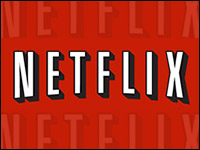
Netflix is hiking subscription fees for new users of its streaming video service effective immediately, while current members will have a grace period before they must start paying the increased rates.
Subscribers in the U.S. and Canada will fork over an extra dollar a month, with the fee jumping to US$8.99. Existing subscribers will pay their current fees for two years before they are charged a little more each month. They will be able to stream Netflix content in high definition on two screens at the same time.
The company has added a new plan for $7.99 per month, which allows consumers to view content in standard definition on a single screen at one time. Members can switch between plans whenever they wish.
New UK users will pay an additional Pounds 1, with the rate now Pounds 6.99 per month. In mainland Europe, new members will pay 8.99 euros, up from 7.99 euros. Netflix is available in Norway, Denmark, Sweden, Finland and the Netherlands, and reportedly will launch in France and Germany by the end of the year.
Netflix did not respond to our request for further details.
Increase Warning
In its most recent earnings statement, the company disclosed that it generated revenue of $1.066 billion for the first quarter with a profit of $166 million. It projected revenue of $1.139 billion for the second quarter, with profit standing at $211 million. The company initially revealed in the earnings statement that it would increase prices this quarter.
With 34.38 million domestic paid users, Netflix stands to increase revenue by $413 million per year from those members alone, once the two-year grace period has passed. The company has 11.76 million more paid streaming members internationally.
While revenue is unquestionably on Netflix’s mind with this decision, the company may also be responding to competitive pressures.
Amazon recently increased the annual fee for Amazon Prime membership, which provides consumers with unlimited two-day shipping on certain products, plus other perks including access to the Amazon Instant Video service.
That service now is the exclusive third-party streaming media home for a litany of popular HBO shows, including The Wire, The Sopranos and Six Feet Under.
Content Costs
Netflix, by many accounts, is facing a battle for the rights to popular TV shows and movies. While the company needs to spend extensively on both content rights and original content such as House of Cards and Orange is the New Black, the cost of such content may be harming its profit growth.
While its international segment is on track to generate a profit this year, a push into new European markets will keep that segment at a net loss as the company invests in content and marketing in those territories, it noted in its most recent earnings statement.
This is not the first time Netflix has attempted to rearrange its fee structure. In 2011, it announced plans to spin off the long-standing DVD-by-mail service as a separate company, with an additional charge for video game rentals.
Under the plan, consumers would have needed to use a separate website to access the DVD rental business, which was to be named “Qwikster.” However, the company dropped the plan in response to a massive customer backlash.
This time around, customer protests are unlikely to become an issue.
‘Eases The Pain’
“This is far less confusing, and while no one wants to pay more, the grace period eases the pain for existing customers who are unlikely to go elsewhere,” Greg Scoblete, editor at RealClearWorld and RealClearTechnology, told the E-Commerce Times.
“This time, Netflix said they won’t raise prices on existing customers yet, only new customers,” telecom analyst Jeff Kagan told the E-Commerce Times. “This will give their existing customers some time to get comfortable with the idea of rising prices.”
Meanwhile, the company has agreed to deals with Internet service providers such as Comcast to improve the delivery of streaming video to customers. However, it seems Netflix had its arm twisted to enter those agreements, given its public spat with Comcast over the topic.
That type of apparent preferential treatment is a hot button issue in the Net neutrality debate. The Federal Communications Commission is set to vote on a proposal that would allow ISPs to negotiate deals with content providers such as Netflix over delivery of their services to users.
The costs of having to pay ISPs for high-quality service delivery may indeed be passed onto the customer.
However, Netflix is paying less to Comcast than it would pay if it had to go through an intermediary, Dan Rayburn, principal analyst at Frost & Sullivan, told the E-Commerce Times.
In the end, Netflix’s price increase comes down to one simple factor, he said. “As they continue to expand internationally and in the U.S., they have no choice but to raise rates because content licensing is expensive.”






















































Social Media
See all Social Media